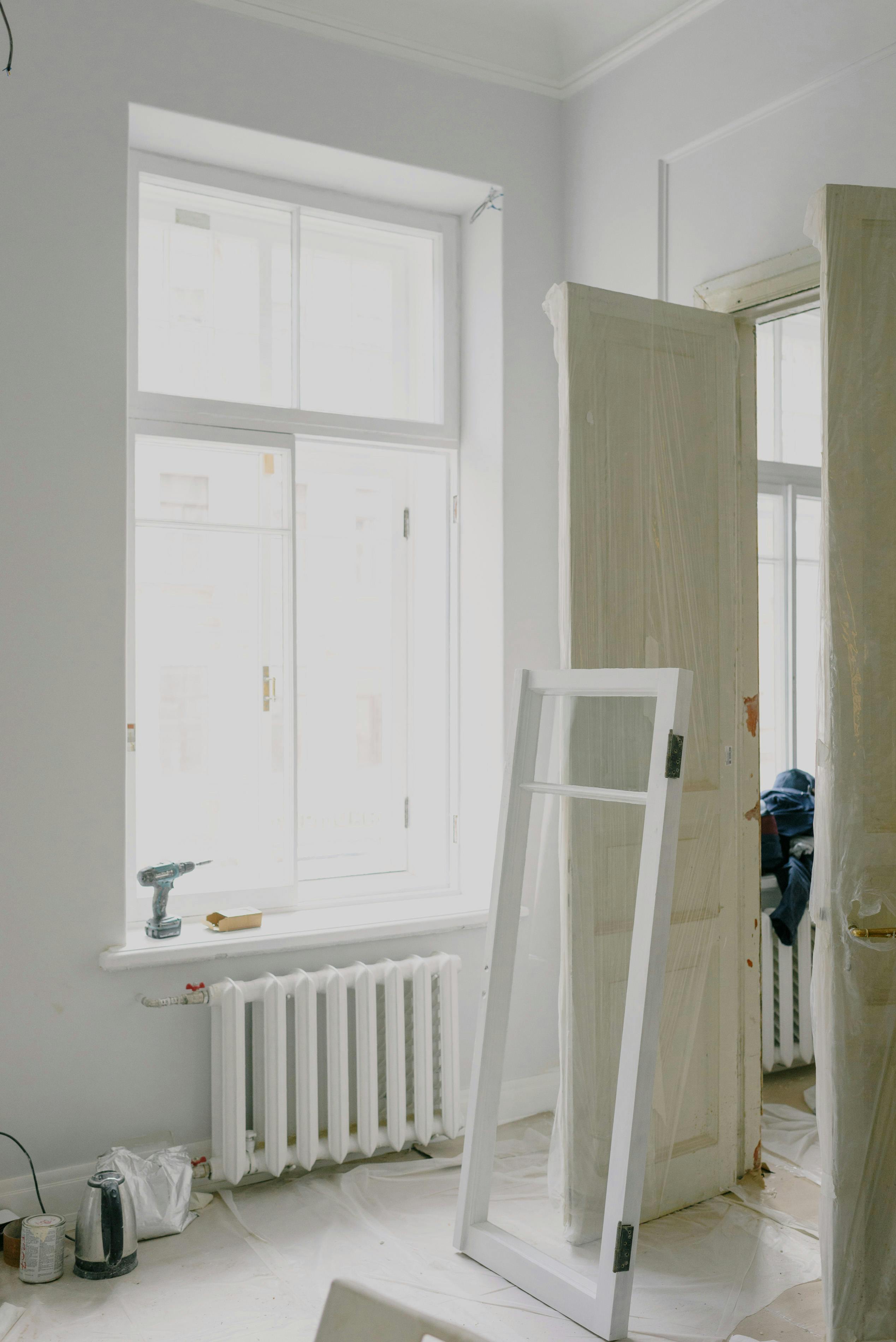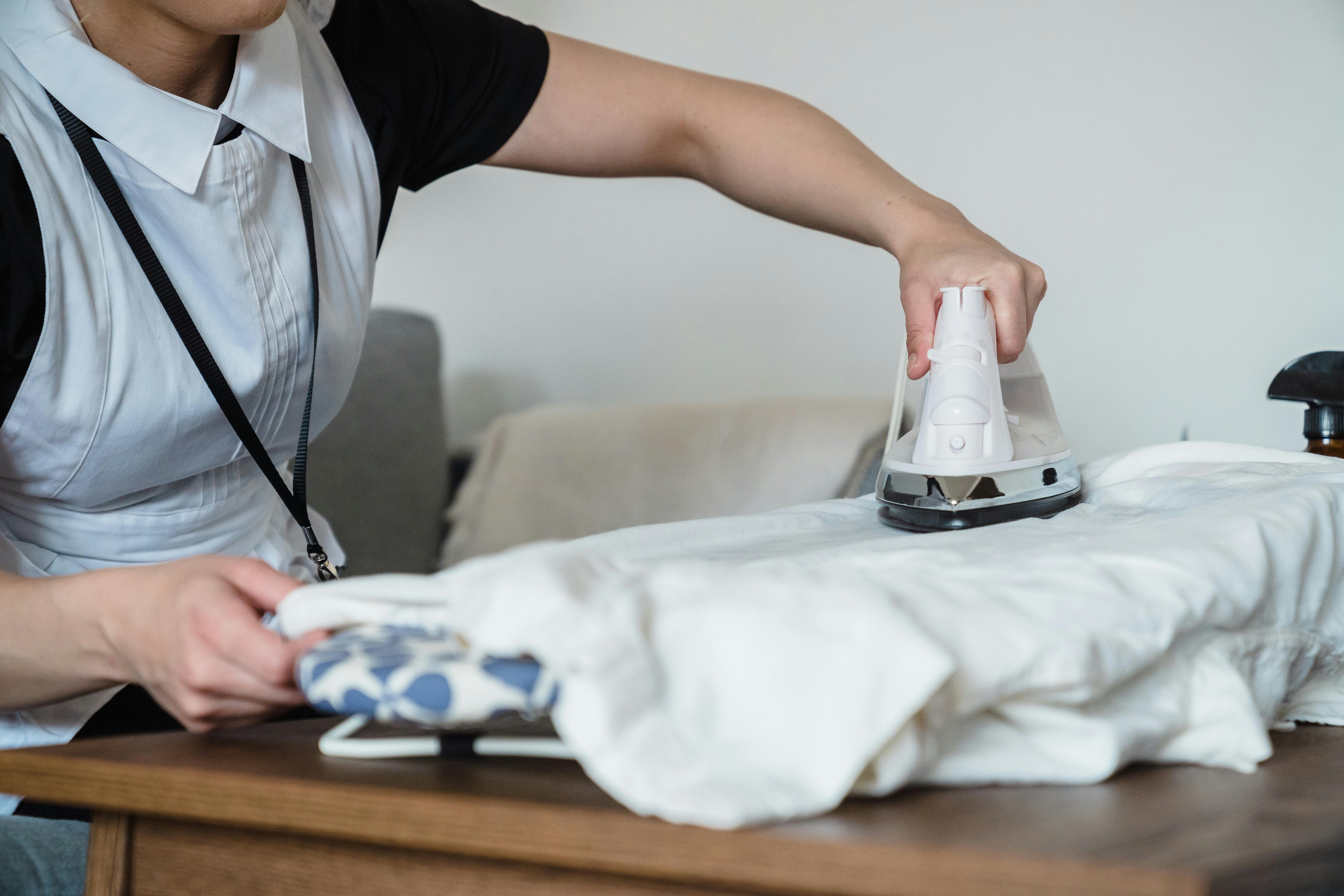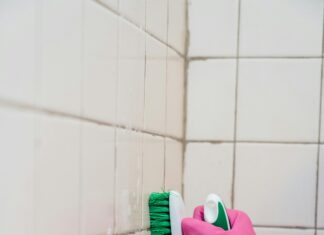Looking for an easy way to make your own all-purpose cleaning spray at home without breaking the bank? You’re in the right place! This article unveils the simple secrets behind crafting a DIY all-purpose cleaner that’s not only effective but also eco-friendly and safe for your family. Wondering how to create a powerful, natural cleaning solution using just a few ingredients you probably already have in your kitchen? Keep reading to discover how to transform everyday household items into a multipurpose cleaning spray that tackles dirt, grime, and germs effortlessly.
In today’s world, where toxic chemicals in cleaning products raise health concerns, making your own homemade all-purpose cleaner has become a trending topic among eco-conscious homeowners. Why settle for store-bought sprays loaded with harsh ingredients when you can whip up a natural cleaning spray recipe that’s both budget-friendly and customizable? From sparkling countertops to shiny floors, this DIY cleaning spray will quickly become your go-to solution. Plus, it’s perfect for anyone looking to reduce plastic waste and embrace a greener lifestyle.
So, how exactly do you make a safe and effective all-purpose cleaning spray at home? The process is surprisingly simple! With just a few common ingredients like vinegar, baking soda, and essential oils, you can create a spray that’s tough on stains but gentle on surfaces. Ready to learn the step-by-step method for your very own homemade all-purpose cleaner recipe? Let’s dive into the easy instructions and tips that will change the way you clean forever!
7 Simple Ingredients You Need to Make the Ultimate All-Purpose Cleaning Spray at Home
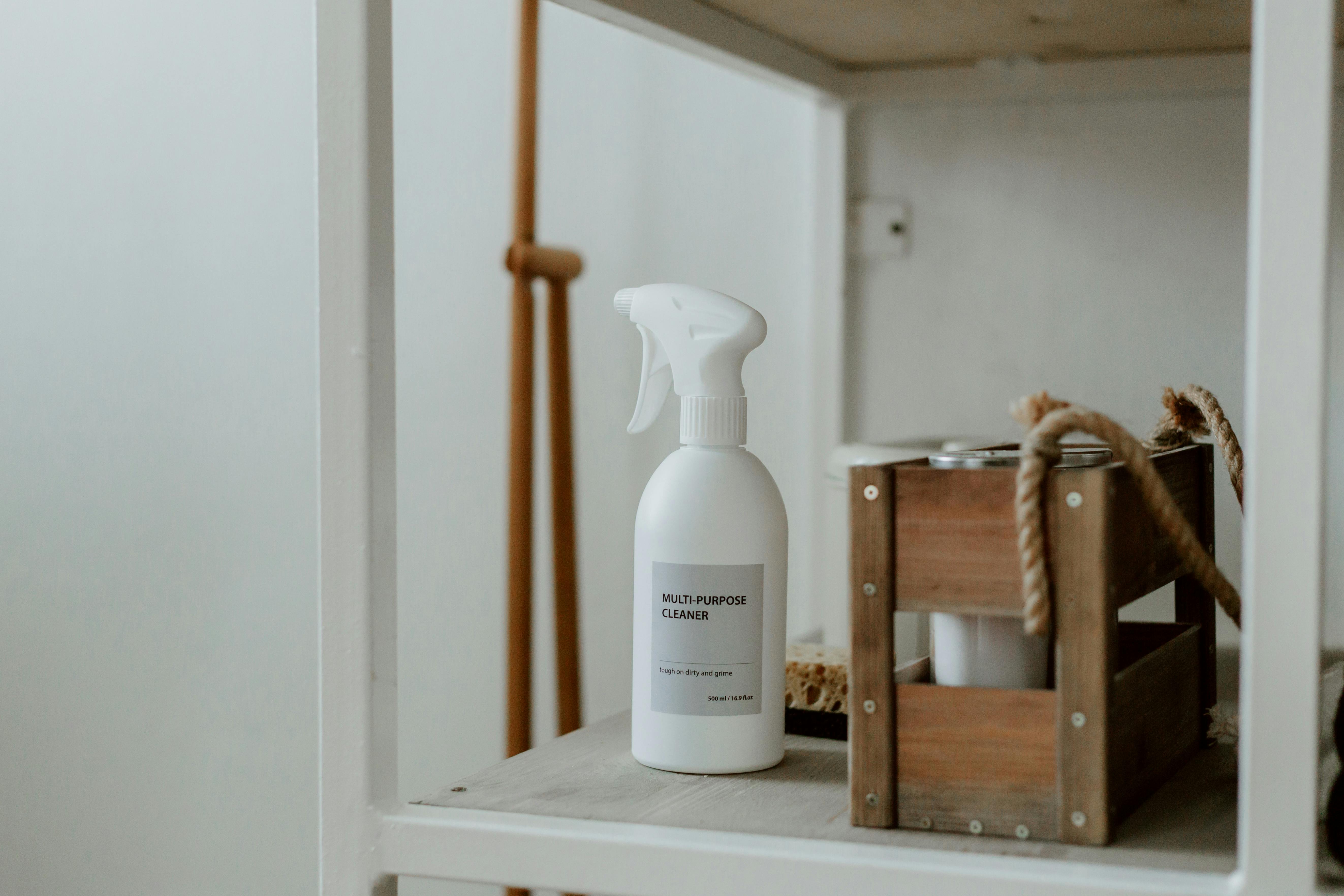
If you ever wanted to clean your home without buying dozens of different sprays, then making your own all-purpose cleaning spray at home is something you might wanna try. It’s cheaper, eco-friendly, and you can customize it to fit your needs. Plus, knowing exactly what’s inside gives you peace of mind, especially if you have kids or pets around. In this article, I’m gonna show you the 7 simple ingredients you need to make the ultimate all-purpose cleaning spray, and how to put them together easy at home in New York or anywhere else.
Why Make Your Own All-Purpose Cleaning Spray?
Before jumping into recipes, let’s quickly talk why making your own cleaner is smart:
- Saves money: Commercial cleaners can cost a lot, especially when you buy different ones for floors, counters, windows, etc.
- Better for environment: Many store-bought cleaners contain harsh chemicals that pollute water and air.
- Customizable: Want a lemon scent? Or something stronger for greasy kitchen mess? You control it.
- Non-toxic: Avoid allergens or irritants often found in chemical cleaners.
- Historical note: Long time ago, people used vinegar, baking soda, and citrus peels for cleaning before synthetic chemicals were invented in the 20th century.
The 7 Simple Ingredients You Need
Here is the list of ingredients you can find easily in supermarkets or online. All are natural, safe, and effective.
Distilled Water
Acts as the base for your spray. Using distilled water helps avoid minerals that could leave residues.White Vinegar
Great natural disinfectant and deodorizer. Vinegar cuts through grease and removes stains well.Baking Soda
A mild abrasive and deodorizer. Helps lift dirt and neutralize odors.Liquid Castile Soap
Made from vegetable oils, it’s a gentle yet effective soap that removes grime without harsh chemicals.Rubbing Alcohol (Isopropyl Alcohol)
Speeds up drying and kills germs. Usually 70% is best for cleaning purposes.Essential Oils (like Tea Tree, Lemon, or Lavender)
Adds pleasant fragrance and some have antimicrobial properties.Hydrogen Peroxide (3%)
A natural bleaching and disinfecting agent. Use carefully as it can lighten some surfaces.
Basic Recipe To Make Your Own All-Purpose Cleaning Spray
Here’s a simple formula to try out:
- 1 cup distilled water
- 1 cup white vinegar
- 1 tablespoon baking soda
- 1 teaspoon liquid Castile soap
- 1/4 cup rubbing alcohol
- 10 drops essential oil (your choice)
- Optional: 1 tablespoon hydrogen peroxide (add after mixing others)
How To Mix It
- In a bowl or large measuring cup, carefully mix vinegar and baking soda (it will fizz, so pour slowly).
- Add distilled water, liquid Castile soap, and rubbing alcohol. Stir gently.
- Add essential oils and stir again.
- If using hydrogen peroxide, add it last and gently mix.
- Pour into a clean spray bottle. Label it clearly, so you don’t confuse it with something else.
Tips for Using Your Homemade Spray
- Shake well before each use because natural ingredients may separate.
- Test on small inconspicuous area first to avoid damage.
- Safe for most surfaces like countertops, tiles, glass, stainless steel. Avoid marble or natural stone as vinegar can etch them.
- Use on kitchen, bathroom, windows, and even floors!
- Store in cool dark place, and make fresh batch every few weeks for best potency.
Comparing Homemade Spray vs Store-Bought
| Feature | Homemade All-Purpose Spray | Store-Bought Cleaners |
|---|---|---|
| Cost | Low (mostly cheap ingredients) | Medium to high depending on brand |
| Environmental Impact | Low (biodegradable ingredients) | Can contain harsh chemicals |
| Customizability | High (choose scent and strength) | Low (fixed formulas) |
| Shelf Life | Shorter (few weeks) | Longer (months to years) |
| Safety (for kids/pets) | Safer (non-toxic when used right) | Variable, some toxic |
| Effectiveness | Very good for general cleaning | Often stronger for specific stains |
A Few More Practical Examples
- For heavy grease, increase vinegar amount and add more Castile soap.
- To freshen carpets, spray lightly and sprinkle baking soda after. Vacuum after 15 minutes.
- Use lemon essential oil if you want a fresh citrus scent and extra antibacterial power.
- Lavender oil
How to Create an Eco-Friendly All-Purpose Cleaner: Step-by-Step Homemade Spray Recipe
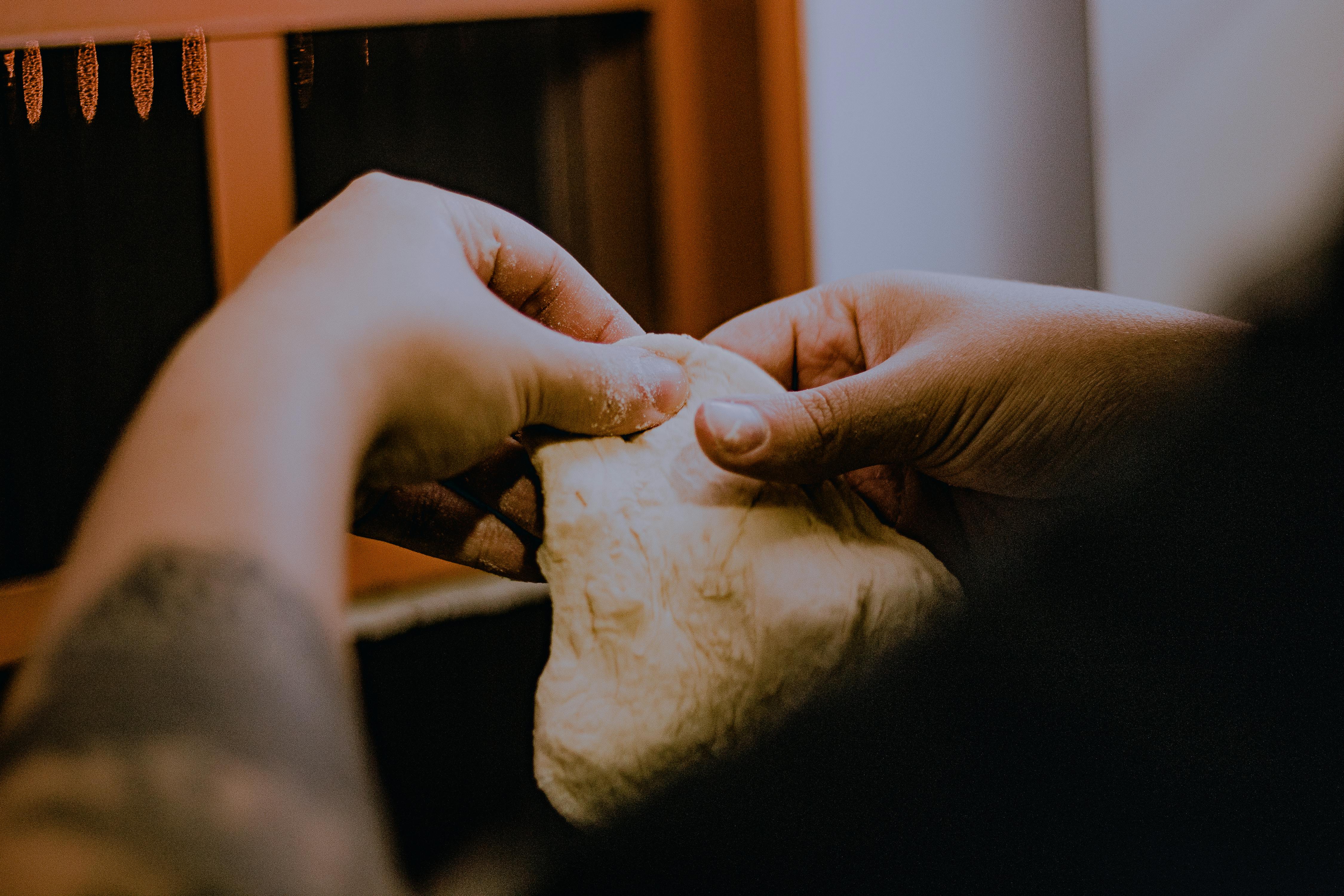
Living in New York, where the hustle never really stops, finding ways to make your home cleaner without spending a fortune or harming the environment can be a bit tough. But hey, it’s not impossible! Many folks are turning towards making their own cleaning solutions at home, and one of the easiest and most useful ones is an eco-friendly all-purpose cleaner. You don’t need to buy those expensive commercial sprays filled with chemicals, when you can whip one up using natural stuff right from your kitchen or local store. Let’s dive into how to make your own all-purpose cleaning spray at home, step-by-step, with a recipe that’s simple, effective, and good for the planet.
Why Make Your Own All-Purpose Cleaner?
Before we get our hands dirty, a little background never hurt no one. Homemade cleaners have been around since forever, way before supermarkets stocked endless bottles of cleaning products. People used vinegar, lemon, and baking soda to clean everything from windows to floors. These natural ingredients have antibacterial properties and can cut through grease pretty well.
Some facts to keep in mind:
- Commercial cleaners often contain harsh chemicals that can irritate skin, eyes, and lungs.
- Eco-friendly cleaning reduces plastic waste because you reuse spray bottles.
- Making your own cleaner saves money — you only buy what you need and avoid unnecessary additives.
What Ingredients Do You Need?
Here is a quick list of the ingredients for your homemade all-purpose cleaner:
- White vinegar (1 cup)
- Distilled water (1 cup)
- Rubbing alcohol or vodka (1/2 cup)
- Liquid Castile soap (1 tablespoon)
- Essential oils (optional, 15-20 drops; like tea tree, lemon, or lavender)
Each ingredient has a role:
- Vinegar is great for cutting grease and killing some bacteria.
- Water dilutes vinegar so it doesn’t damage surfaces.
- Alcohol speeds up drying and acts as disinfectant.
- Castile soap helps break down dirt.
- Essential oils add nice smell and sometimes extra antibacterial power.
Step-by-Step Guide to Making the Spray
Making your own all-purpose spray is straightforward but pay attention to the measurements and the order you mix them in.
- Grab a clean spray bottle — preferably glass or sturdy plastic.
- Pour 1 cup of distilled water into the bottle.
- Add 1 cup of white vinegar.
- Pour in 1/2 cup rubbing alcohol or vodka.
- Add 1 tablespoon liquid Castile soap.
- Put 15-20 drops of your favorite essential oils.
- Put the spray nozzle back on and shake gently to mix everything.
How To Use Your DIY Cleaner Effectively
This cleaner works on many surfaces — kitchen counters, bathroom sinks, tiles, and even glass. But heads up! Avoid using it on natural stone like granite or marble, as vinegar might etch the surface.
Tips for best results:
- Spray directly on the surface and wipe with a microfiber cloth.
- For tough stains, let it sit for a few minutes before wiping.
- Shake the bottle before each use to mix ingredients again.
- Store the spray in a cool, dark place to keep it fresh.
Comparing Homemade Cleaner Vs. Store-Bought
Here’s a quick look at how your homemade spray stacks up against commercial ones:
| Feature | Homemade Cleaner | Commercial Cleaner |
|---|---|---|
| Cost | Low (ingredients are cheap) | High (branded and packaged) |
| Ingredients | Natural and simple | Chemical-heavy, synthetic |
| Environmental Impact | Low (reusable bottles, eco-friendly ingredients) | High (plastic waste and chemicals) |
| Shelf Life | Shorter (around 1 month) | Longer (due to preservatives) |
| Scent | Customizable with oils | Artificial fragrances |
Some Extra Ideas To Customize Your Cleaner
You don’t have to stick exactly to the recipe. Depending on what you like or need, try these variations:
- Add a tablespoon of baking soda for extra scrubbing power (don’t mix with vinegar in the bottle; use separately).
- Use lemon juice instead of vinegar for a citrus scent and stronger grease-cutting.
- Experiment with different essential oil blends like eucalyptus and peppermint for freshness.
Safety and Storage Notes
Even though this cleaner is natural, it’s still important to use it right:
- Keep it away from kids and pets.
- Label your bottle clearly.
- Do not mix with bleach or other cleaners.
- Test on small area before broad use.
Making your own all-purpose spray at home in New York is a smart move if you want to save money, help reduce plastic waste, and avoid harsh chemicals. It’s a simple recipe but packs a punch for everyday cleaning jobs. Plus, it’s kinda satisfying knowing you made it yourself. So next time your countertop needs a wipe-down
Why Making Your Own All-Purpose Cleaning Spray Saves Money and Protects Your Family’s Health

Living in New York, where everything moves fast and costs keep rising, many folks are looking for ways to save money and keep their homes safe. One smart trick that more and more people discover is making your own all-purpose cleaning spray at home. Not only does this save you bucks at the store, but it also helps protect your family health by avoiding harsh chemicals. You might think, “Is making cleaning spray really worth it?” Well, let’s dive in and see why it’s a game-changer, and how you can whip up your own cleaning solution quickly.
Why Making Your Own All-Purpose Cleaning Spray Saves Money and Protects Your Family’s Health
Buying those commercial cleaning bottles every month adds up. You might pay anywhere from $3 to $10 per bottle, and if you clean regularly, that cost multiply fast. Plus, many store-bought sprays contain chemical ingredients which sometimes arent so great for your family’s respiratory system or skin. Some cleaning products even contain synthetic fragrances and preservatives that could cause allergic reactions or headaches, especially for kids or pets.
By making your own spray at home, you use simple, natural ingredients that cost pennies compared to the commercial stuff. Here are some key points why it’s better:
- Cost-effective: Ingredients like vinegar, baking soda, and essential oils are cheap and used in many household tasks.
- Non-toxic: No harsh chemicals means less risk for asthma attacks, skin irritation, or toxic fumes.
- Eco-friendly: Homemade sprays reduce plastic waste since you can reuse the bottles.
- Customizable: You can adjust scents and strength to your liking without hidden additives.
- Multipurpose: Works on kitchen counters, bathrooms, glass, and more.
Historically, people cleaned with vinegar and lemon juice before the invention of synthetic chemicals in the 20th century. Those natural cleaners worked well and were safe, and they still do today with a little know-how.
How To Make Your Own All-Purpose Cleaning Spray At Home Easily
You don’t need fancy tools or weird ingredients to make your own cleaner. Here’s a simple recipe that many New Yorkers tried and loved:
Ingredients:
- 1 cup white vinegar
- 1 cup water
- 10-15 drops of essential oil (like lemon, tea tree, or lavender)
- Optional: 1 tablespoon baking soda (for tougher stains)
Steps:
- Mix water and vinegar in a spray bottle.
- Add essential oils for fragrance and extra antibacterial power.
- If you want, slowly add baking soda (it may fizz, so add carefully).
- Shake the bottle gently before use.
That’s it! You got yourself a multi-use cleaner that disinfects and deodorizes. Vinegar’s mild acidity helps break down grease and kills many germs. Essential oils like tea tree are natural antimicrobials. Baking soda adds scrubbing power to remove grime.
Practical Uses and Tips for Your Homemade Cleaning Spray
You might wonder where exactly to use this spray. Here’s some practical examples:
- Kitchen counters and sinks
- Bathroom tiles and fixtures
- Glass surfaces and mirrors (wipe with a lint-free cloth)
- Refrigerator interiors
- Floors (test on small area first)
Avoid using vinegar-based sprays on natural stone surfaces like marble or granite, because acidity could damage them. For those, you can simply use water and a few drops of mild dish soap.
Comparison: Homemade Cleaner Vs Commercial Cleaner
| Feature | Homemade Cleaning Spray | Commercial Cleaning Spray |
|---|---|---|
| Cost per use | Less than $0.10 | Around $0.50 to $1.00 |
| Ingredients | Vinegar, water, essential oils | Chemicals, fragrances, preservatives |
| Environmental impact | Biodegradable, less waste | Plastic bottles, chemical runoff |
| Safety for kids/pets | Generally safe | Potentially harmful |
| Customization | Easy (change scents/strength) | Fixed formulas |
| Effectiveness on tough stains | Good with baking soda help | Usually strong due to chemicals |
A Few More DIY Variations To Try
If you want to experiment, here are some other recipes you might enjoy:
- Citrus Cleaner: Use leftover orange or lemon peels soaked in vinegar for 2 weeks. Then strain and mix with water for a fresh-smelling cleaner.
- Hydrogen Peroxide Boost: Mix equal parts water and 3% hydrogen peroxide for disinfecting surfaces (don’t mix with vinegar!).
- Castile Soap Cleaner: Combine 1 cup water, 1 tablespoon castile soap, and 10 drops essential oils for a gentle cleaner.
Simple Tools You Will Need
- Spray bottles (preferably glass or BPA-free plastic)
- Measuring cups and spo
The Best DIY All-Purpose Cleaning Spray for Tough Stains: Natural and Non-Toxic Solutions
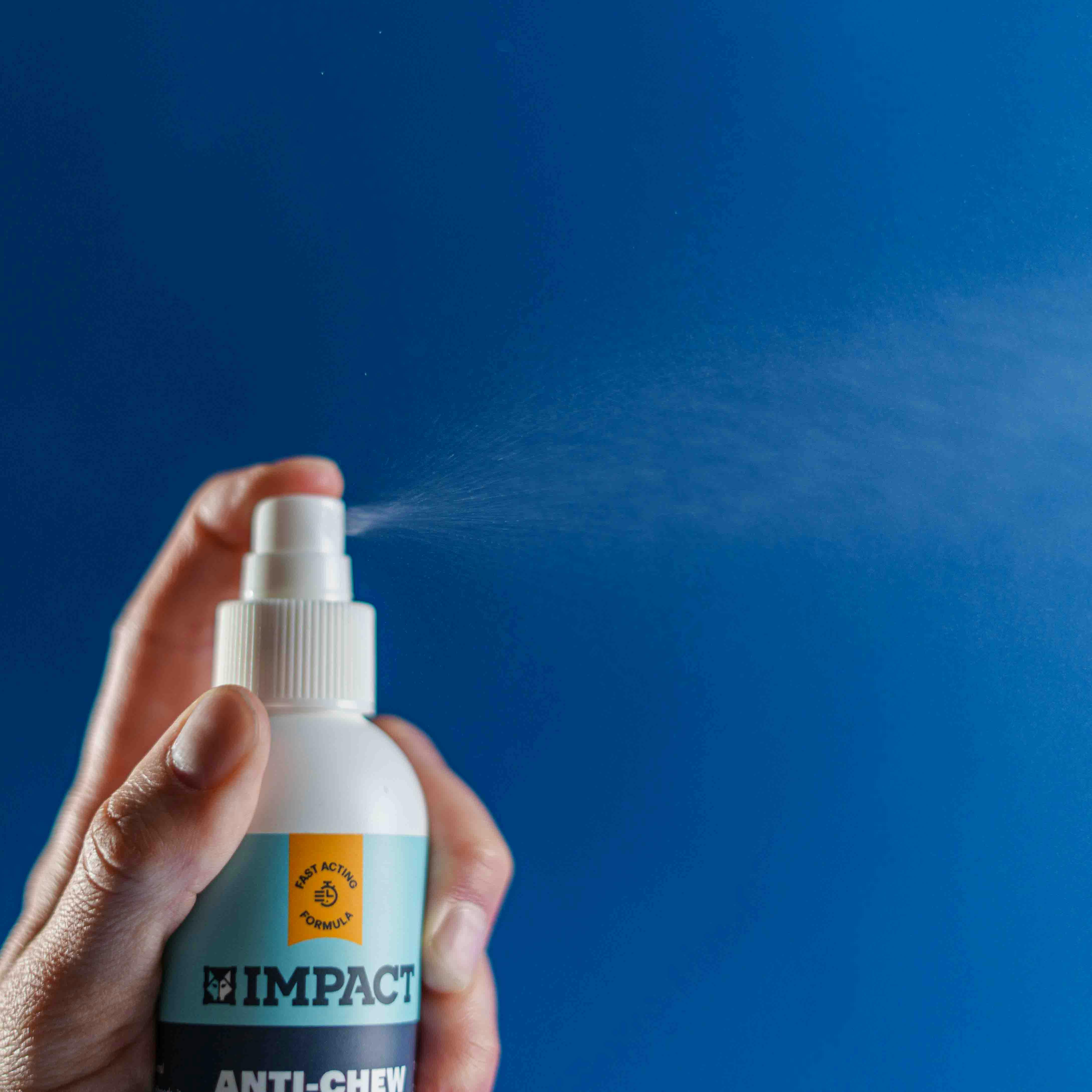
When it comes to cleaning your home, especially in a busy city like New York, finding a solution that works for everything but also is safe and natural can feels like a big challenge. Many commercial cleaners have harsh chemicals that can irritate your skin or damage the environment, plus it cost a lot over time. So, why not make your own all-purpose cleaning spray at home? It’s easier than you think, and with the right ingredients, it can handle tough stains on countertops, floors, and even bathroom tiles without the toxic fumes.
Why Choose Natural and Non-Toxic Cleaning Solutions?
Natural cleaning solutions been used for centuries, long before the invention of modern chemical cleaners. For example, vinegar and baking soda have been household staples since the 19th century. These ingredients are not only effective but also biodegradable and safe to use around kids and pets. Unlike many store-bought products, natural cleaners don’t leave behind harmful residues or strong artificial scents.
Here’s some reasons why natural and non-toxic cleaning sprays are worth trying:
- Reduce exposure to harsh chemicals that can cause allergies or respiratory problems.
- Environmentally friendly, breaking down easily and not polluting waterways.
- Cost-effective, using common kitchen ingredients that you probably already have.
- Versatile, able to clean multiple surfaces without needing different products.
The Best DIY All-Purpose Cleaning Spray for Tough Stains
You might wonder what makes a cleaning spray “all-purpose” and good against tough stains. The key is combining ingredients that break down grease, lift grime, and disinfect without damaging surfaces. Vinegar, lemon juice, and baking soda are the most popular trio. Each of them has unique properties:
- Vinegar: acidic, good for cutting through mineral deposits and grease.
- Lemon juice: natural bleach and deodorizer.
- Baking soda: mild abrasive that lifts stains and neutralizes odors.
How To Make Your Own All-Purpose Cleaning Spray At Home Easily
Here’s a simple recipe that you can mix in just a few minutes, using ingredients you can find in any New York grocery store:
Ingredients:
- 1 cup white distilled vinegar
- 1 cup water (preferably distilled or filtered)
- 10-15 drops of essential oil (optional, for scent and extra antibacterial power; e.g., tea tree, lavender, or eucalyptus)
- 1 tablespoon baking soda
Steps:
- In a spray bottle, carefully combine vinegar and water.
- Slowly add baking soda. It will fizz — that’s normal and helps with cleaning power.
- Add essential oils if you want a nice fragrance.
- Shake gently to mix everything.
- Test on a small area before applying to whole surface.
Use this spray on kitchen counters, bathroom sinks, tiled floors, or even glass surfaces. But avoid using it on natural stone like granite or marble because the vinegar can etch the surface.
Comparison of DIY and Commercial Cleaners
Here’s a quick comparison table to understand differences between homemade and store-bought all-purpose sprays:
| Feature | DIY Natural Spray | Commercial Cleaners |
|---|---|---|
| Ingredients | Vinegar, baking soda, water | Synthetic chemicals, fragrances |
| Safety | Non-toxic, pet & kid friendly | May contain irritants, allergens |
| Environmental Impact | Biodegradable, low pollution | Can be harmful to waterways |
| Cost | Very low | Moderate to high |
| Effectiveness on Stains | Good on grease and grime | Often stronger on specific stains |
| Shelf Life | Shorter (weeks to months) | Longer shelf life due to preservatives |
Practical Examples of Using Your All-Purpose Spray
- Kitchen: Spray on greasy stovetops or cabinet doors, then wipe with a sponge. The vinegar will cut grease while baking soda scrubs away residue.
- Bathroom: Great for soap scum on tiles and fixtures. Spray directly and leave for 5 minutes before scrubbing.
- Windows and Mirrors: Use the spray with a microfiber cloth for streak-free shine.
- Floors: Safe for vinyl or linoleum floors; mop as usual with the spray diluted in water.
- Pet Areas: Cleans pet messes without harmful chemicals, making it safer for your furry friends.
Tips for Making Cleaning Easier and More Effective
- Always label your spray bottle, so you don’t confuse it with other liquids.
- Store in a cool, dark place to keep the ingredients fresh longer.
- For tougher stains, apply the spray and let it sit longer or use a soft brush to agitate.
- Avoid mixing vinegar-based sprays with bleach or ammonia products — dangerous fumes can form.
- Experiment with different essential oils for customized scents and benefits.
Making your own cleaning spray not only save money but also helps you control what chemicals enter your home. Plus, it feels good knowing
How to Customize Your Homemade Cleaning Spray with Essential Oils for a Fresh, Long-Lasting Scent

If you ever get tired of chemical smells in your home cleaners or want something that smells fresh and natural, making your own all-purpose cleaning spray with essential oils is a perfect way to go. Not only does it save money, but it also gives you control over what goes into your spray. Plus, you can customize the scent exactly how you like it, making your home smell inviting for longer time, without harsh artificial fragrances.
Why Homemade Cleaning Sprays?
Before we dive into how to make it, let’s talk why homemade cleaners became popular. For decades, people relied on store-bought sprays filled with synthetic ingredients that sometimes cause allergies or irritations. In recent years, there’s been a shift toward natural cleaning solutions, partly because of environmental concerns and partly for personal health. Essential oils have been used for centuries, dating back to ancient Egypt and Rome, for their antibacterial properties and pleasant aromas. Mixing these oils with simple ingredients like vinegar or baking soda creates a powerful, safe cleaner you can use around kids and pets.
How To Make Your Own All-Purpose Cleaning Spray at Home
Making an all-purpose cleaner is easier than you might think. You don’t need fancy tools, just some common household ingredients and essential oils of your choice. Here is a simple recipe and tips to customize it.
Basic Ingredients:
- 1 cup distilled white vinegar
- 1 cup water (preferably distilled)
- 10-15 drops of essential oils (more or less depending on scent strength)
- Optional: 1 teaspoon liquid castile soap for extra cleaning power
Steps:
- Pour vinegar and water into a spray bottle.
- Add essential oils. Some popular choices are lemon, tea tree, lavender, and eucalyptus.
- If you want, add castile soap and gently swirl to mix.
- Label the spray bottle and shake well before each use.
Essential Oils for Fresh, Long-Lasting Scent
Choosing the right essential oils can make a huge difference in how your cleaner smells and works. Different oils have different properties and fragrance profiles. Here’s a quick rundown:
- Lemon: Fresh, citrus scent; natural degreaser and disinfectant.
- Tea Tree: Strong antibacterial and antifungal properties; sharp, medicinal smell.
- Lavender: Calming and floral; known for antimicrobial effects.
- Eucalyptus: Refreshing and camphoraceous; good for mold and mildew.
- Peppermint: Invigorating and cool; natural insect repellent.
You can also mix oils for unique blends. For example, lemon and lavender make a bright but relaxing aroma, while eucalyptus and peppermint feel crisp and clean.
Tips To Customize Your Spray
- Don’t be scared to experiment! Start with small amounts of essential oils and adjust according to your preferences.
- If your spray smells too strong or irritates your skin, dilute with more water.
- Use a dark-colored spray bottle to protect the oils from sunlight, which can degrade their potency.
- Test on small surface areas first to make sure it won’t damage countertops or finishes.
- Keep in mind, vinegar smell fades as it dries, but strong essential oils might linger longer.
Comparing Homemade vs Store-Bought Cleaners
Here’s a quick table showing some differences between DIY all-purpose spray and commercial products:
| Feature | Homemade Spray | Store-Bought Cleaners |
|---|---|---|
| Ingredients | Natural, simple, customizable | Often synthetic, complex mixtures |
| Cost | Low, especially if you buy oils in bulk | Generally higher per use |
| Scent | Fresh, natural, adjustable | Artificial or overpowering |
| Environmental Impact | Low, biodegradable, less packaging | Often includes microplastics or chemicals |
| Shelf Life | 1-2 weeks (due to no preservatives) | Longer due to additives |
Practical Uses of Your All-Purpose Spray
This cleaning spray is super versatile and you can use it in many ways around your home:
- Wiping down kitchen counters and appliances
- Cleaning bathroom sinks, tiles, and fixtures
- Spraying on glass surfaces for a streak-free shine
- Freshening up upholstery or carpets (test first!)
- Eliminating odors from trash cans or refrigerators
Because it’s gentle, you can also use it on delicate surfaces where harsher chemicals might cause damage.
A Little History About Essential Oils in Cleaning
Using plants for cleaning is not a new idea. Ancient civilizations like the Egyptians used citrus peels and herbs to clean and perfume their homes. In the Middle Ages, people burned herbs to purify the air. Essential oils were isolated in the 19th century and began to be used in perfumes and medicines, eventually making their way
Conclusion
Creating your own all-purpose cleaning spray at home is a simple, cost-effective, and eco-friendly way to maintain a spotless living space. By using natural ingredients like vinegar, baking soda, and essential oils, you can avoid harsh chemicals while still achieving excellent cleaning results. The process involves just a few easy steps: mixing the right proportions of these ingredients in a spray bottle, shaking well, and applying to various surfaces for a fresh, streak-free shine. Not only does this homemade solution save money, but it also reduces your environmental impact and allows customization with your favorite scents. Embracing DIY cleaning products empowers you to take control over what goes into your home and promotes a healthier lifestyle. So why not gather the materials and whip up your own all-purpose cleaner today? You’ll enjoy a cleaner home and the satisfaction of using a safe, sustainable product you made yourself.


